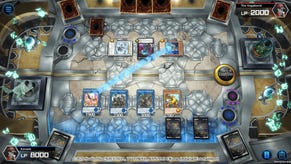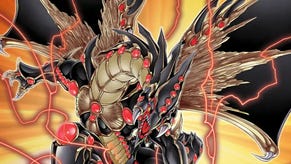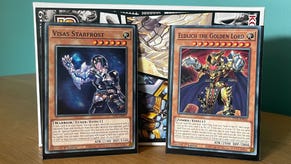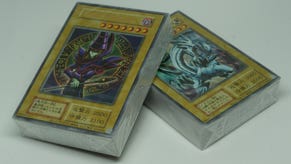The best Yu-Gi-Oh! GX decks you can play for real
How would the anime’s top duelists have fared in the TCG’s competitive scene?
The latest booster pack for the Yu-Gi-Oh! TCG, Power of the Elements, has recently hit store shelves, bringing with it a dose of nostalgia alongside its vast array of new cards. Beyond simply offering a few new archetypes like Vernusylph and Tearlaments, this set offers a blast from the past by bringing us right back to the peak of the Yu-Gi-Oh! GX era of the game. Adorning every pack is Neos, representing the brand new Elemental HERO support set to give the much-beloved retro archetype a much-needed facelift.
With all this rekindled love for the first-ever sequel to the much-loved original series of the Yu-Gi-Oh! anime just as players flock back to the decks that defined this era, we thought we’d run down the most competitive decks featured within Yu-Gi-Oh! GX.
Best Yu-Gi-Oh! GX decks
To do so we need to bend the rules somewhat - this list of the best Yu-Gi-Oh! GX decks won’t be tracking which character’s deck would have a shot in the competitive game today. As the game has evolved so much over the years, the increased speed and strength found in modern Yu-Gi-Oh! would likely make it difficult for many of these decks to have a shot today.
Instead, we’re going to explore which GX decks have been competitive across the past and present of Yu-Gi-Oh!, whether as a result of their sheer strength upon release or as a result of circumstances where later support and evolutions of the deck would have allowed it to compete at some point throughout the game’s history.
How about we chill out with this crew in the schoolyard and run down the best GX decks this era of Yu-Gi-Oh! had to offer, shall we?
1. Elemental HERO (Jaden Yuki)
Blowing a fusion
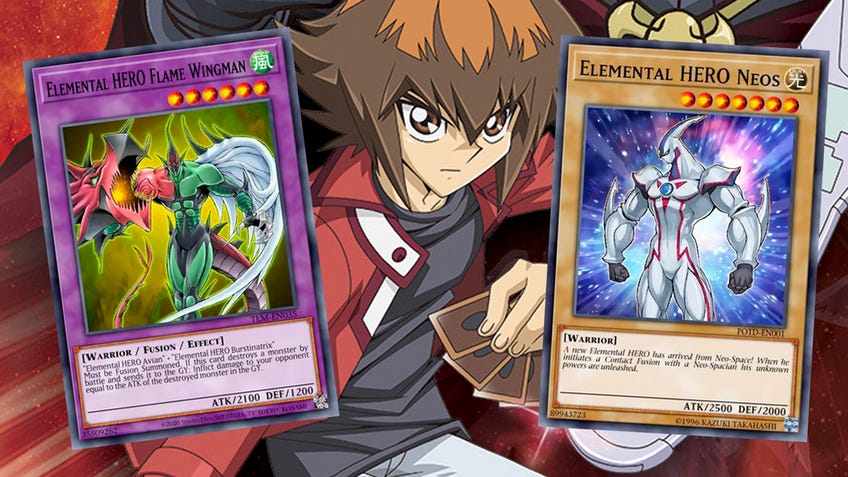
Behind Yugi Moto himself with his Dark Magician, few decks in the Yu-Gi-Oh! anime are quite as iconic as Jaden’s Elemental HERO. The deck’s evolution over the course of GX from a fun fusion deck that knocked Crowler off their perch thanks to the clever use of their Elemental HERO Flame Wingman all the way to their final duel against their inspiration Yugi Moto with the power of Elemental HERO Neos was stark, and beloved by fans around the world.
In the competitive scene the viability of Elemental HERO has been mixed, with the deck and cards from the archetype ranging from irrelevant to defining the format. It’s perhaps unsurprising to note that the release of cards like Elemental HERO Avian hardly set the game alight, but Elemental HERO Stratos changed things. The card’s ability to generate advantage by searching itself or other HERO cards (including more the competitive Destiny HERO used by Aster Phoenix in GX) made it useful in the early 2007 format within Airblade Turbo decks before the card was swiftly limited to a single copy.
The deck was never able to function competitively in the way that Jaden used it within the anime, but engines built around cards from the archetype like Stratos (until it was banned) have been an ever-present aspect of the expanded meta for the game. Even if not starring at the upper echelons of competitive play, HERO cards were beloved and experimented enough to have some ever-present competitive variant - and newer HERO Link and Fusion monsters such as the Xtra HERO cards have even helped the deck to top tournaments 15 years on after its introduction. Now that’s a legacy.
2. Dark World
Shadowy techniques

Although not as well-remembered as earlier arcs in Yu-Gi-Oh! GX, in part due to the anime’s early cancellation in English shortly afterwards to prepare for the release of 5Ds before all episodes could be dubbed and broadcast, the Dark World arc of the series signalled a darker turn for the series and introduced another beloved archetype into the card game. Far from being simply mere monsters in the series, these were also characters, with many monsters playing double duty as primary antagonists. As a deck, they were also rather competitive.
At the time of the deck’s introduction the mechanic of discarding cards from your hand to the Graveyard to activate effects was unique, although the deck struggled to find much success beyond a local tournament level. It was following the release of the Gates of the Underworld Structure Deck that the archetype went from a fun budget deck to a competitive force, thanks primarily to new cards like the Gates of Dark World field spell and Grapha, Dragon Lord of Dark World.
That being said, the deck perhaps remains less competitive than many of the others featured on this list. YCS Kansas City, the first major event following that structure deck’s release, saw it take three spots in the top 32, and the deck became a major force in the meta going forwards, but it struggled to top events like some other GX decks mentioned here. Since then, it has remained a strong but rogue choice within the competitive scene.
3. Volcanic (Axel Brodie)
A minor eruption
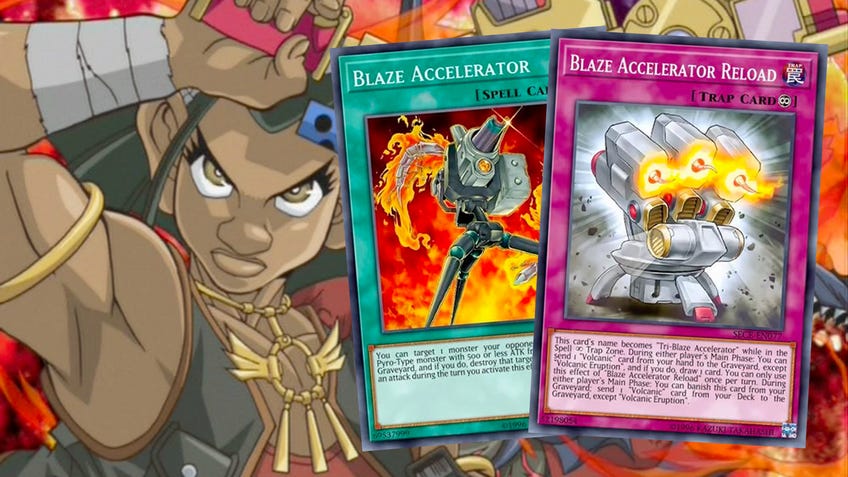
The Volcanic deck only makes mostly-minor appearances within Yu-Gi-Oh! GX under the mentorship of Axel Brodie. Only making its first appearance in the second half of the anime’s run and featuring minimally in the series, the deck’s competitive history takes a far different path, finding competitive viability around their first release and later in the game’s life using vastly different strategies.
The first moment the deck was viable was upon its initial release in 2007, using Volcanic Shell, Volcanic Rocket and Blaze Accelerator as an engine within Monarch and Plant decks to improve their consistency. Although unable to retain viability in a pure variant, the decks topped major tournaments by offering easy ways to add cards to the hand that many decks at the time struggled to accomplish.
The release of Blaze Accelerator Reload as an improved version of the original card changed things in 2015, increasing draw potential and making an older, rarely used card in the archetype called Volcanic Scattershot a major force in this new era of the deck. This helped the deck reach the top 32 at YCS California in a pure variant of the deck while HERO-themed variants also performed well at this and other tournaments. The deck was one of the better during this era of the game and remains beloved.
4. Cyber Dragon (Zane Truesdale)
A mechanical revolution
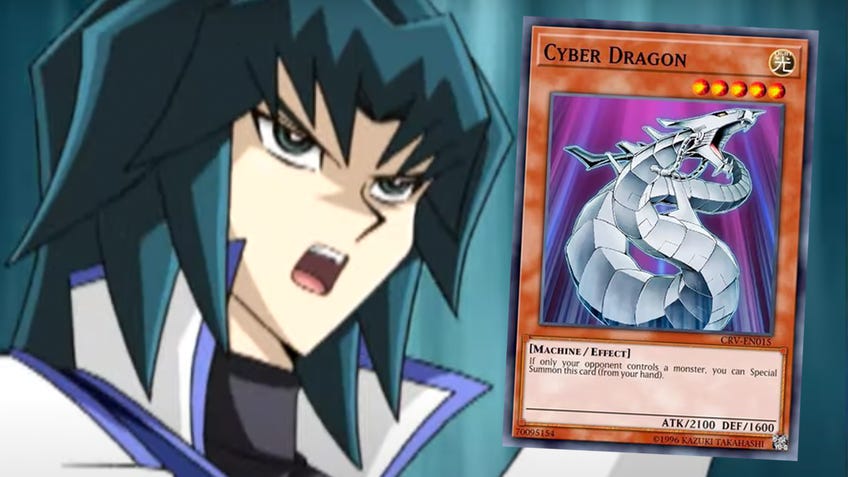
There’s a reason that Cyber Dragon remains one of the most iconic cards ever to grace the Yu-Gi-Oh! TCG. As noted in our rundown of the best-ever Yu-Gi-Oh! cards, this card’s release was a defining moment in the trajectory of the game by allowing players to special summon a 2100 ATK monster without needing to tribute or normal summon - unheard of at the time of the card’s release. No wonder Zane Truesdale was not only one of the best duelists in the Yu-Gi-Oh! GX anime, but also one of the few characters ever to beat Jaden in a duel.
The early competitive impact of Cyber Dragon was immediately obvious, with the card immediately featuring in every top-four deck in the first Yu-Gi-Oh! tournament in Atlanta following the card’s release in 2005. Even as the game evolved in the following years, Cyber Dragon cards were an ever-present in many of the best Yu-Gi-Oh! decks of the era. When Cyber Stein was legal, Cyber End Dragon was a common target, later followed by the dominance of Chimeratech Overdragon thanks to the incredible strength potential the deck could muster when summoned using Overload Fusion and Future Fusion.
Until the 5Ds era and its reduced relevance in the meta due to Synchro summons, Cyber Dragons were a constant presence in every major tournament following their initial release. Yet the card never truly went away, as new fusions like Chimeratech Fortress Dragon and particularly the arrival of Xyz monsters once again boosted its popularity. Although the card has seen its share of rise and falls over the years, its abundance of support has meant the card has found new ways to remain relevant in the many years since. Indeed, it would be fair to say that Cyber Dragon is the best card and deck to come from the GX era of Yu-Gi-Oh!




